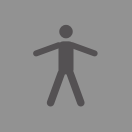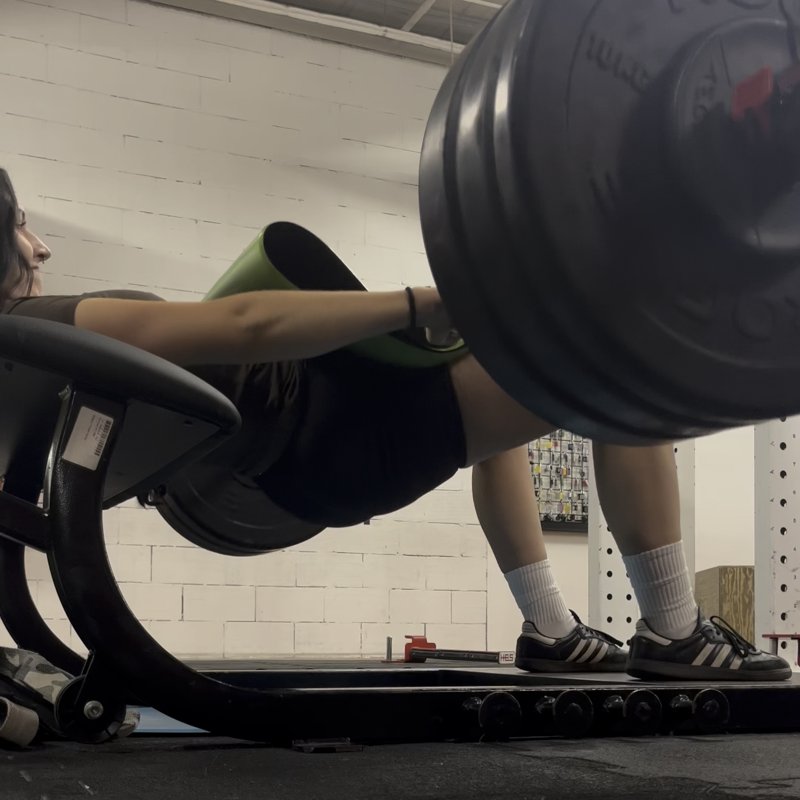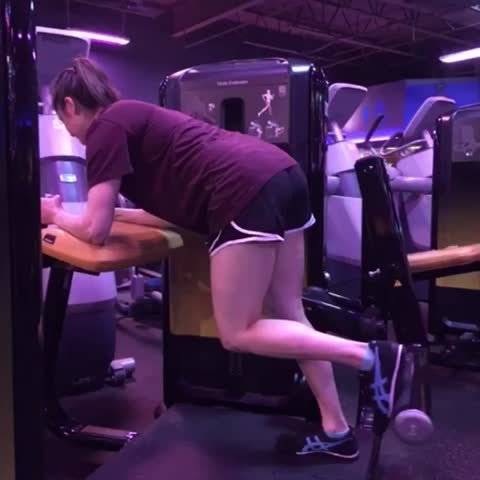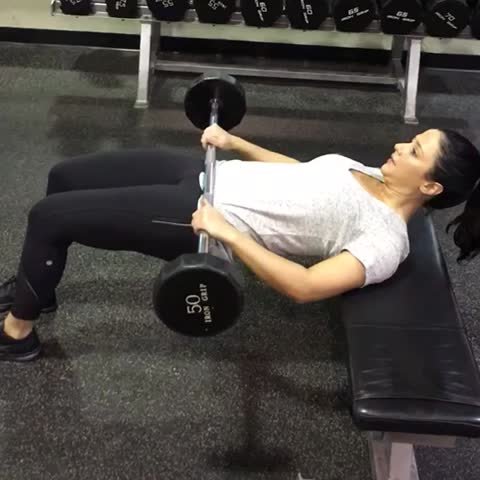Seated Hip Abduction: The Ultimate Guide
The Seated Hip Abduction is a machine-based isolation exercise that targets the hip abductor muscles and glutes by pushing the legs outward against resistance, helping to strengthen the outer hips and thighs.
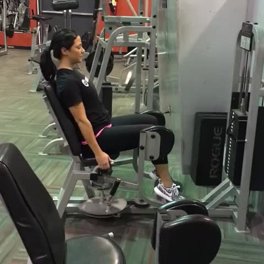
Quick Facts
Key Benefit
Outer hip strength and stability
Primary Muscles
Glutes, Hip Abductors
Secondary Muscles
Abdominals
Equipment
machine
Difficulty
Beginner
Type
Strength
In This Guide
Ready to master the Seated Hip Abduction?
Track your progress, see improvements over time, and build strength consistently.
Download GravitusThe Seated Hip Abduction is a focused isolation exercise that strengthens the often-neglected hip abductor muscles. These muscles, which primarily include the gluteus medius and gluteus minimus, are responsible for moving the leg away from the body's midline—a motion known as hip abduction. While these muscles might not get as much attention as the quadriceps or hamstrings, they play a crucial role in hip stability, proper gait mechanics, and overall lower body function. Weakness in the hip abductors can contribute to issues ranging from knee pain to lower back discomfort, particularly in runners and athletes who perform lateral movements. The seated hip abduction machine provides a controlled environment to isolate and strengthen these muscles effectively. By sitting in a stable position with pads against the outer thighs, you can focus entirely on the hip abduction movement without compensating with other muscle groups. Whether your goal is to improve hip stability, enhance athletic performance in sports requiring lateral movement, or simply develop more balanced lower body strength, the seated hip abduction exercise is a valuable addition to your training routine.
Benefits of Seated Hip Abduction
The seated hip abduction exercise offers several important benefits for both performance and everyday function.
Hip Stability
Strengthens the muscles responsible for lateral hip stability, which can improve balance and reduce the risk of falls, particularly important for older adults.
Knee Protection
Strong hip abductors help maintain proper knee alignment during walking, running, and other activities, potentially reducing the risk of knee pain and injuries.
Athletic Performance
Enhances performance in sports requiring lateral movement, direction changes, and agility, such as tennis, basketball, and soccer.
Balanced Lower Body Development
Complements traditional lower body exercises that primarily target the quadriceps, hamstrings, and glutes, creating more comprehensive lower body strength.
Pelvic Alignment
Helps maintain proper pelvic positioning, which can contribute to better posture and reduced lower back pain.
Proper Form & Technique
Starting Position
- Adjust the seat height so that your knees are aligned with the pivot point of the machine.
- Sit with your back flat against the backrest, maintaining good posture.
- Place the outside of your thighs against the machine's padded levers.
- Position your feet flat on the footrests or platform of the machine.
- Grasp the handles or sides of the seat for stability.
- Ensure your spine is neutral and your core is slightly engaged.
Movement
- Exhale as you slowly push your legs outward against the resistance pads.
- Focus on initiating the movement from your hips, not your knees.
- Continue opening your legs until you feel a strong contraction in your outer hips and thighs.
- Hold the fully abducted position briefly (1-2 seconds) to maximize muscle engagement.
- Inhale as you slowly control the return of your legs to the starting position, resisting the weight throughout the movement.
- Avoid allowing the weight stack to touch down between repetitions to maintain constant tension on the muscles.
- Repeat for the desired number of repetitions, maintaining control throughout the set.
Key Form Tips
Hip Focus
Concentrate on using your hip muscles rather than pushing with your knees or feet.
Range of Motion
Work through a full range of motion that feels comfortable without forcing your legs beyond their natural flexibility.
Control
Avoid using momentum or jerky movements - this is an exercise where slow, controlled motion is key.
Spine Position
Keep your lower back pressed against the backrest throughout the movement to prevent arching.
Breathing
Establish a consistent breathing pattern - exhale during exertion (pushing out), inhale during the return phase.
Muscles Worked
Primary Muscles
- glutes: The gluteal muscles, particularly the outer portions (gluteus medius and minimus), are the primary hip abductors and crucial for hip stability during walking and standing.
- hip abductors: A group of muscles located on the outer hip and thigh that work together to move the leg away from the body's midline, providing lateral stability to the hip joint.
Secondary Muscles
- piriformis: A deep external rotator of the hip that assists in abduction when the hip is flexed, as in the seated position.
- sartorius: The longest muscle in the body, it assists with hip flexion and external rotation during the abduction movement.
- abdominals: The abdominals and obliques work isometrically to stabilize the pelvis during the movement.
Common Mistakes and How to Fix Them
Using Momentum
Bouncing or swinging the legs uses momentum rather than muscle strength. Fix this by slowing down the movement and focusing on control throughout the entire range of motion, especially during the return phase.
Lifting Hips Off Seat
Raising one hip to assist the movement indicates the weight is too heavy and reduces effectiveness. Ensure your hips remain level and firmly planted on the seat throughout the exercise, reducing the weight if necessary.
Excessive Range of Motion
Forcing legs too far apart can strain the hip and groin. Work within a comfortable range that allows you to maintain control and proper form. Stop at the point of maximum muscle contraction, not maximum stretch.
Rotating the Legs
Turning the feet inward or outward during the movement changes the muscle emphasis and can stress the knees. Keep your feet neutral, toes pointing forward or slightly outward in a natural position.
Poor Posture
Slouching or arching the back reduces effectiveness and increases injury risk. Maintain a neutral spine with your back against the support pad, avoiding any excessive arching or rounding of the lower back.
Seated Hip Abduction Variations
Machine Variations
-

Single-Leg Hip Abduction
Perform the exercise using only one leg at a time to address strength imbalances and increase the challenge to the working side.
-

Isometric Hip Abduction Hold
Hold the fully abducted position for an extended time (10-30 seconds) to increase time under tension and enhance muscle endurance.
-

Pulse Hip Abduction
At the fully abducted position, perform small "pulse" movements to intensify the contraction in the abductor muscles.
Alternative Exercises
-
Cable Hip Abduction
Perform hip abduction standing with an ankle cuff attached to a low cable pulley, providing variable resistance throughout the range of motion.
-
Resistance Band Seated Abduction
Use a resistance band around the thighs while seated to create tension for the abductors, making this a portable alternative to the machine.
-

Side-Lying Hip Abduction
Perform hip abduction while lying on your side, using bodyweight or ankle weights for resistance, which can better isolate the gluteus medius.
Frequently Asked Questions
For most individuals, training the hip abductors 2-3 times per week with at least 48 hours between sessions is optimal. These smaller stabilizing muscles benefit from adequate recovery time. If you're performing other lower body exercises that work the hips indirectly (such as squats or lunges), you might limit direct hip abduction work to 1-2 dedicated sessions per week. Remember that consistency is more important than frequency - regular, progressive training over time will yield the best results.
The seated hip abduction exercise strengthens and tones the muscles of the outer thighs and hips, but it cannot spot-reduce fat in this area. Fat loss occurs throughout the body in a genetically predetermined pattern when you maintain a caloric deficit through diet and overall exercise. While strengthening these muscles can improve the appearance of the area by creating more muscle tone, combining hip abduction with a comprehensive fitness program including cardiovascular exercise and proper nutrition is necessary for reducing body fat.
The seated hip abduction machine can actually benefit many people with knee issues, particularly those related to poor knee tracking or alignment. Strengthening the hip abductors helps maintain proper alignment of the knees during walking, running, and other activities, potentially reducing pain and preventing further injury. However, if you have an acute knee injury or pain during the exercise, consult with a healthcare professional before continuing. For those with knee concerns, starting with light resistance and perfect form is especially important.
Both exercises effectively target the hip abductor muscles but with different benefits. The seated machine version provides more stability, allowing you to focus exclusively on the target muscles without worrying about balance. This makes it ideal for beginners or rehabilitation scenarios. Standing cable abduction, on the other hand, engages more stabilizing muscles throughout the core and standing leg, making it more functional and challenging. The cable also provides variable resistance throughout the movement compared to the machine's more consistent resistance pattern. Ideally, incorporate both variations into your routine for complete development.
Video Demonstrations
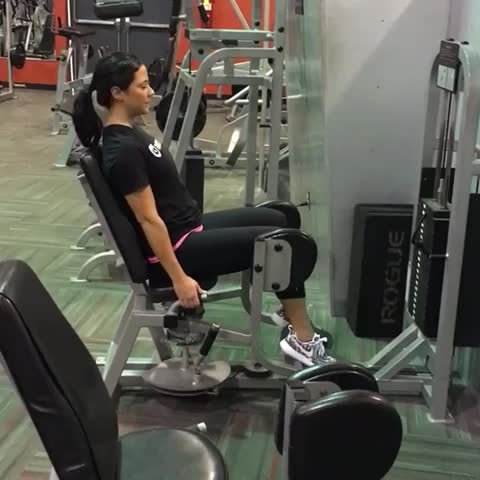
Log in to watch video demonstrations
Login to Watch3 video demonstrations available
Find more video demonstrations in the Gravitus app
Tips from the Community
-

Do a pulse while legs are fully extended each rep for an xtra burn!
-

Went super slow.
-

If possible, use pads to increase the range of motion on the machine. Lean forward and grab onto the machine rails to stretch the glutes further.
Track your progress with Gravitus
Download Gravitus to log your workouts, track your progress, and join a community of fitness enthusiasts.

Helpful Resources
One Rep Max Calculator
Find your one rep max for any exercise without maximal testing. Essential for developing effective strength training programs.
Calculate 1RMWorkout Programs
Follow structured workout programs created by fitness professionals to maximize your strength and muscle gains.
View Programs